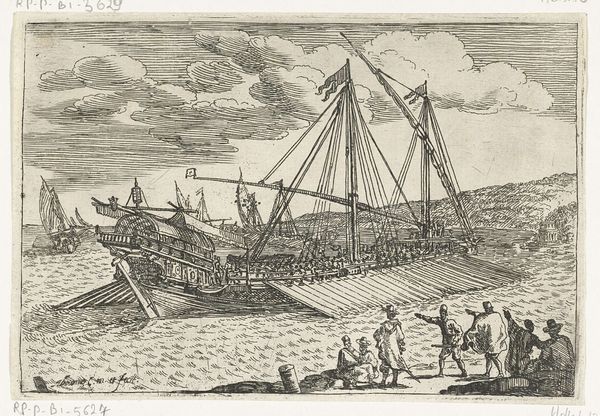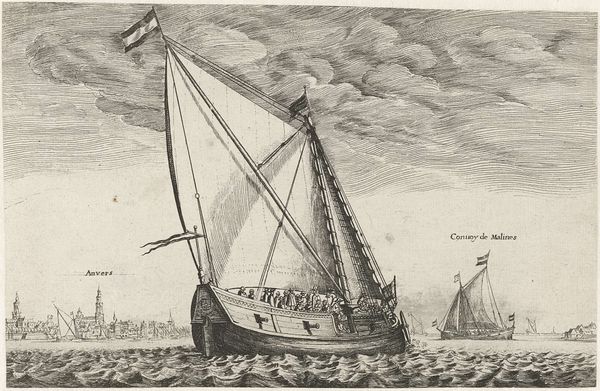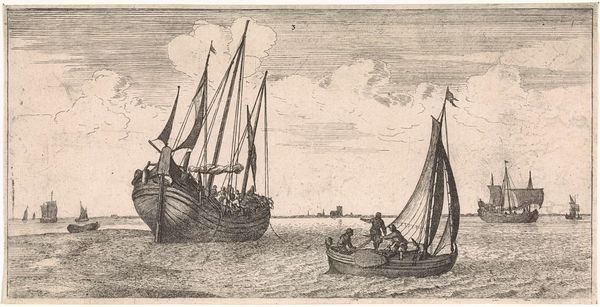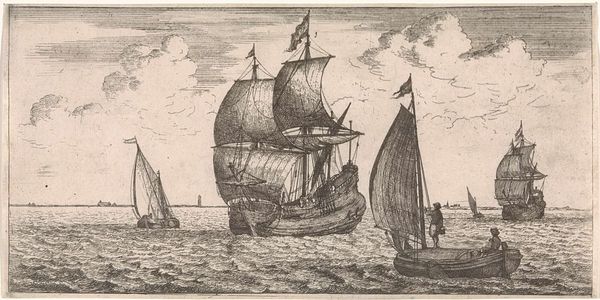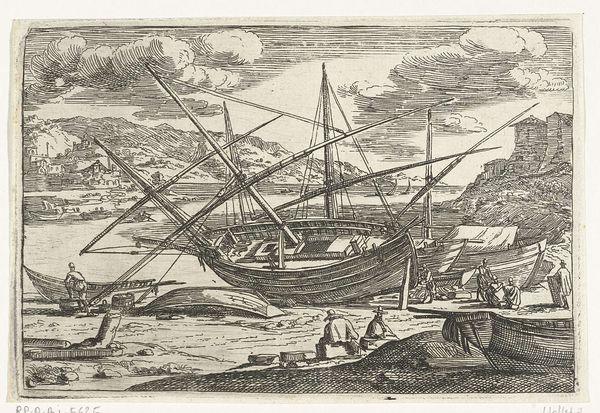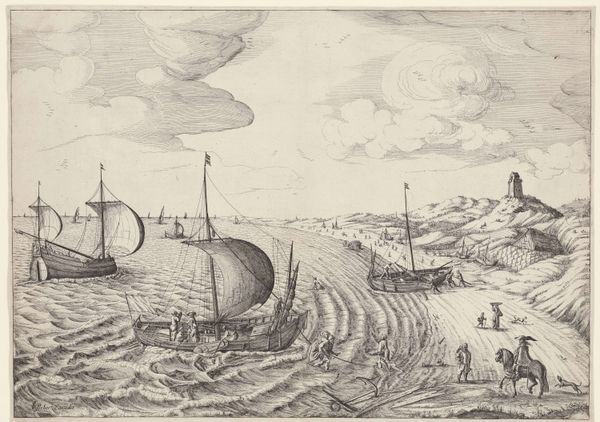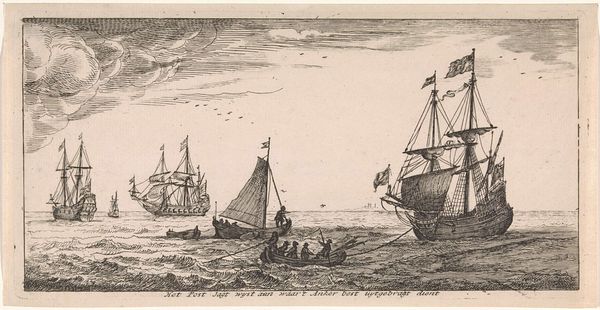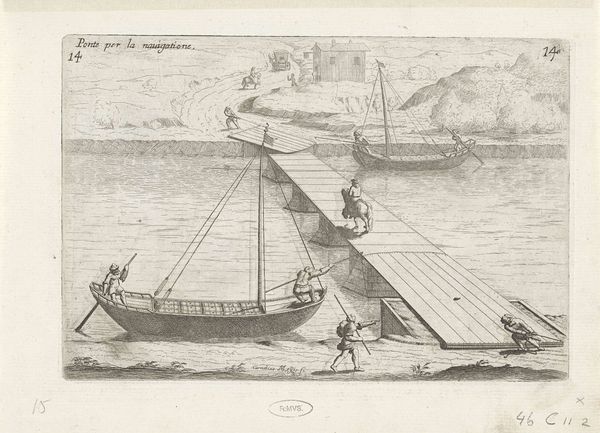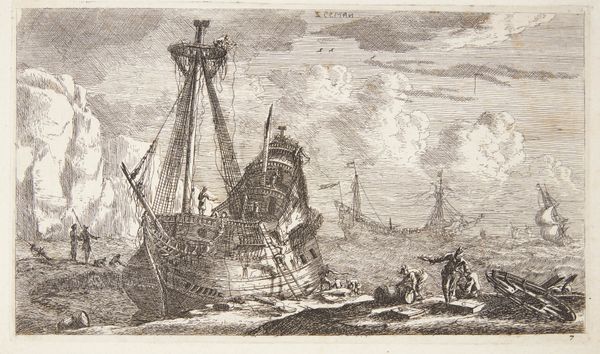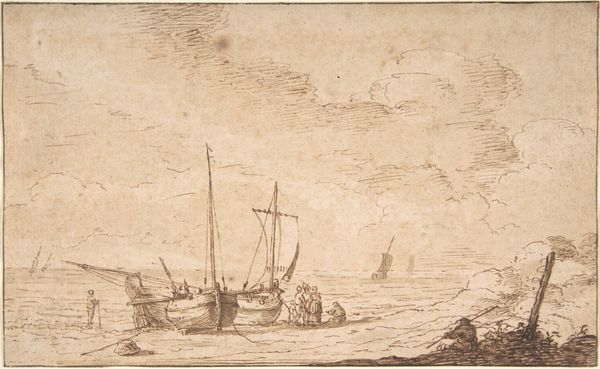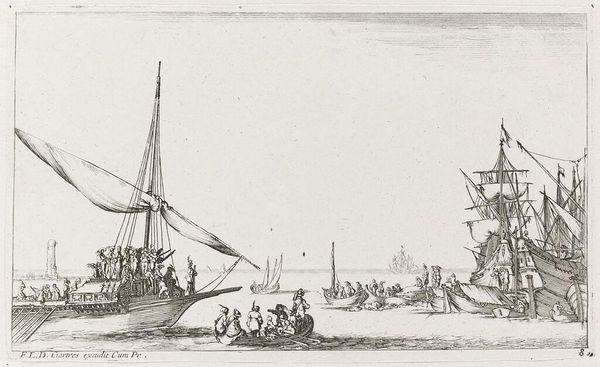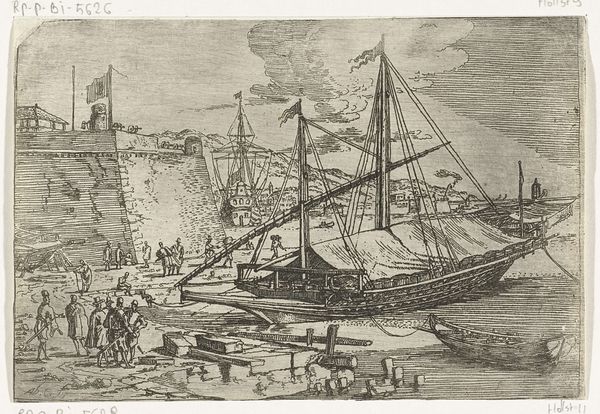
print, etching
#
narrative-art
#
dutch-golden-age
# print
#
etching
#
landscape
#
line
#
cityscape
#
genre-painting
Dimensions: height 129 mm, width 191 mm
Copyright: Rijks Museum: Open Domain
Editor: So, here we have "Bark voor anker bij de haven van Messina" or "Barge Anchored at the Port of Messina" by Abraham Casembroot, likely made sometime in the mid-17th century. It’s an etching on paper, and the intricate linework really catches my eye. There's a certain stillness to the scene, but also a sense of activity around the ship. What do you see in this print, looking at it from a broader perspective? Curator: This piece offers a lens through which we can examine the socio-economic dynamics of the Dutch Golden Age and its relation to global trade. The harbor scene isn't just picturesque; it's indicative of a complex system of labor, maritime power, and colonial expansion. Consider the figures loading cargo – who were they? What were their roles? How does this imagery uphold or perhaps subtly critique the structures of power at play in Messina and beyond? Editor: That's a really interesting point about the figures working there; I hadn't considered them critically. They seem almost anonymous, just part of the scenery. Curator: Exactly! Their anonymity speaks volumes. Dutch Golden Age seascapes often celebrated maritime achievement, but at whose expense? We must ask how the artist’s perspective – likely from a position of privilege – shapes the narrative. Does the print normalize or perhaps unintentionally reveal the reliance on exploited labor that fueled the era’s prosperity? Think about the depiction of Messina itself – is it romanticized, or are there subtle indicators of its integration into a larger economic network that was not always equitable? Editor: It sounds like this seemingly straightforward maritime scene is loaded with potentially critical commentary. Curator: Precisely. By analyzing the composition, the artist’s choices, and the historical context, we can start to unpack the narratives of power, labor, and exchange embedded within this seemingly simple etching. How can such an image serve to broaden our understanding of the relationship between the core and periphery? Editor: I'm definitely seeing this work with fresh eyes now, appreciating its historical depth and implications regarding early globalization. Curator: Wonderful. It is a beautiful example of the many possibilities an artwork can offer!
Comments
No comments
Be the first to comment and join the conversation on the ultimate creative platform.
